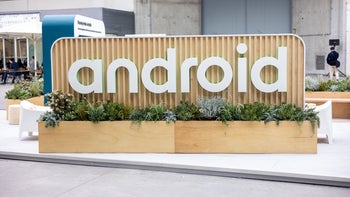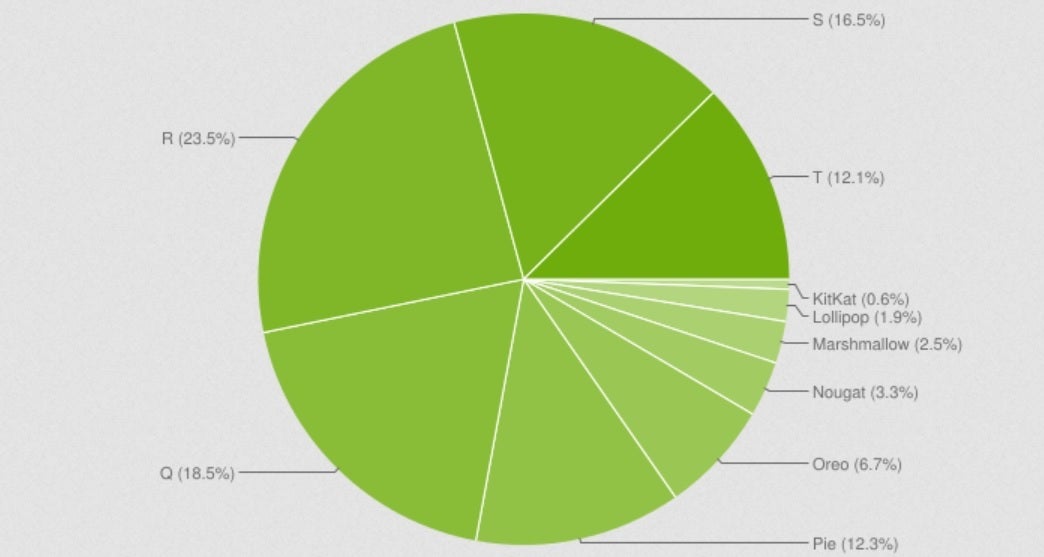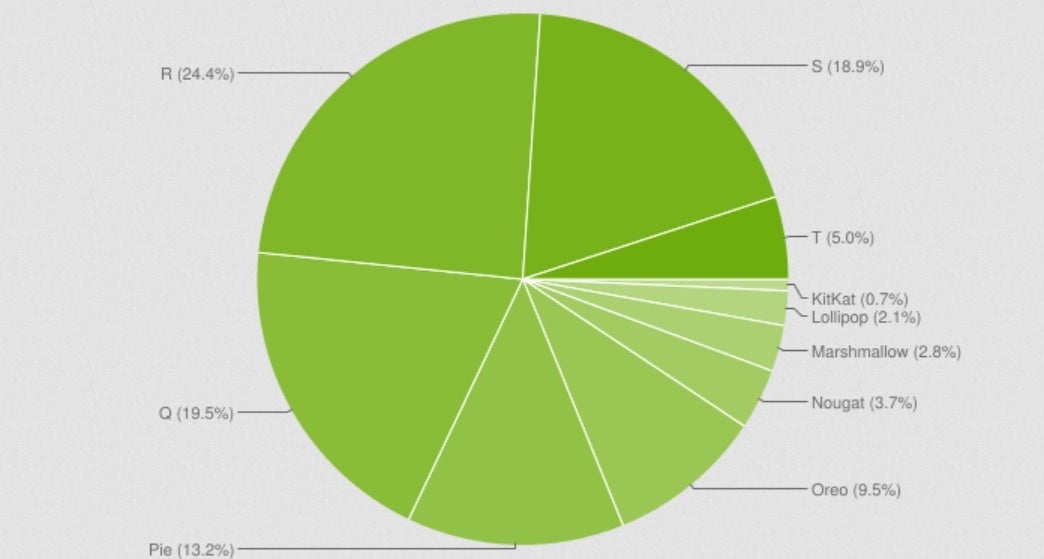Latest data shows more Android devices running Android 9 than Android 13

Remember the old days when Google released the latest Android distribution figures every month? Because of the large number of companies making Android phones and with only one of them involved in the development of Android, the update schedule for Android phones is staggered with Google's Pixel handsets (at least those models eligible to be updated) receiving the latest Android build first.
As a result, typically the most recent Android release would not be the version of the Android operating system most in use. That is very much unlike iOS as the latest version of the latter is usually being used on most iPhone units at any given time. Of course, the difference is that with iOS, Apple makes the phone and the software giving it more control. Yes, Google develops Android but outside of the Pixel line, it has no manufacturing control over Android handsets. This fragmentation is frustrating to non-Pixel Android users.
Now found in Android Studio (via 9to5Google), where it is updated quarterly instead of monthly, the latest Android Distribution figures show that for April 2023, Android 11 (released in 2020) is the version of Android currently running on the most Android devices (a leading 23.5%). That is followed by the 18.5% of Android devices powered by Android 10 (2019) and the 16.5% that use Android 12 (2021). Next comes Android 9, aka Pie, which was released in 2018 and drives 12.3% of Android phones and tablets in use today.

The latest Android Distribution figures for April 2023
In a good example of Android's fragmentation, available since last August, only 12.1% of Android devices have the most recent Android 13 build installed. That's followed by Android 8 Oreo (2017, 6.7%), Android 7 Nougat (2016, 3.3%), Android 6 Marshmallow (2015, 2.5%), Android 5 Lollipop (2014, 1.9%), and Android 4.4 KitKat (2013,.6%).

The January 2023 Android distribution figures
The previous distribution figures released in January showed that only 5% of Android phones and tablets were running Android 13. While low, there has been a big increase in Android devices running the latest version of the operating system. Samsung aggressively offers four years of Android updates and five years of security updates which might have helped with the surge in Android 13's distribution figure. Other manufacturers have also extended their Android update policies.
Ironically, even though Google is responsible for both the manufacture of Pixel devices and the development of Android, Pixels only receive three years of system updates although Google does match Sammy's promise to deliver security updates for five years.










Things that are NOT allowed: